Introduction
Victims of domestic violence present regularly to emergency departments. Several studies have indicated that 22-33% of all patients who present to emergency departments are victims of domestic violence. This puts emergency physicians and nurses in a unique position to screen for victims of this societal plague. The literature suggests, however, that only a small percentage of victims of domestic violence are recognized as such in the emergency department. These studies document detection rates by emergency staff as low as 5.6%. One study that evaluated emergency department visits by victims of domestic violence found that 43% of women with acute trauma presented six or more times before they were recognized and identified as victims of abuse; nearly half these patients presented no less than 12 times. These findings, though they may shock us, should perhaps not surprise us, given that fewer than 50% of the medical schools in the United States include courses on domestic violence in their curriculum. This deficiency is also present in residency training programs. A study released in 1989 reported that only 8% of practicing physicians indicate they have received adequate training to deal with issues related to and victims of domestic violence.
Identification of Pattern Injuries
A pattern injury is one which has a tell-tale marker for the tool which inflicted it. The list of ‘tools’ is infinite. Commonly used ones are: hands, belts, baseball bats, kitchen utensils and curling irons. Each of these tools leaves a skin imprint which reflects its shape and is, therefore, unique to it. Pattern injuries are consistently reproducible. They can be classified into three major categories, according to their source: blunt force, sharp force and thermal.
A knowledge of pattern injuries and the precise documentation as to the anatomic location of each injury will assist the physician and law enforcement officer in determining what implement, tool or weapon was responsible for producing a particular wound. Knowing which tool or weapon was used will help the investigator to determine if the injury is consistent or inconsistent with the history given by the patient, a caregiver or an accused assailant. In addition to written documentation, photographic documentation of injuries is desired for placement in the patient’s medical record.
Blunt Force Pattern Injuries
Contusions
The most common blunt force injury is the contusion or bruise. Other manifestations of blunt force/trauma to the skin are the abrasion and the laceration. With sufficient force, the offending weapon, whose shape or configuration is unique, will stamp a mirror image of itself on the skin. Examples commonly seen in victims of assault, domestic violence and child abuse include: slap marks from the hand with digits delineated (Fig. 1), looped or flat contusions from belts or cords (Fig. 2), contusions from fingertip pressure (Fig. 3), scratches from fingernails (Fig. 4), parallel contusions from contact with a linear object, like a baseball bat (Fig. 5), contusions from the heels and soles of shoes (Fig. 6), and semicircular contusions or contused abrasions from bites (Fig. 7).
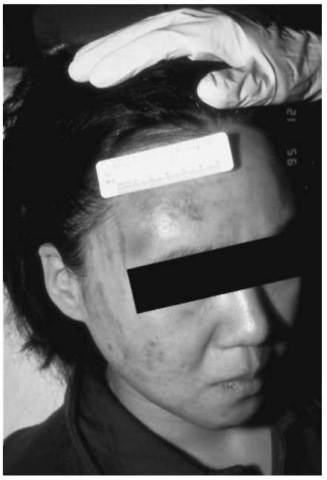
Figure 1 The hand is the most common ‘weapon’ of domestic violence. The slap mark present on this patient’s cheek shows areas of central clearing from impact with the extended fingers.
A blow from a linear object leaves a contusion characterized by a set of parallel lines separated by an area of central clearing. The blood directly underneath the striking object is forcibly displaced to the sides, which accounts for the pattern’s appearance (Fig. 5 and Fig. 8).
Although some injuries are not remarkable or important in terms of physical treatment, emergency physicians should be suspicious upon encountering them. When physicians observe circular contusions or linear contusions, they should be suspicious of abuse or assault. Circular contusions 1.0-1.5 cm in diameter are consistent with fingertip pressure and grab marks (Fig. 3). An anatomical location where fingertip pressure contusions are often seen and easily overlooked is the medial aspect of the upper arm (Fig. 9). When a physician suspects a linear contusion to be a belt mark, a very careful examination of the wound may reveal evidence which will aid law enforcement officers in searching a domicile to find the offending belt in question.
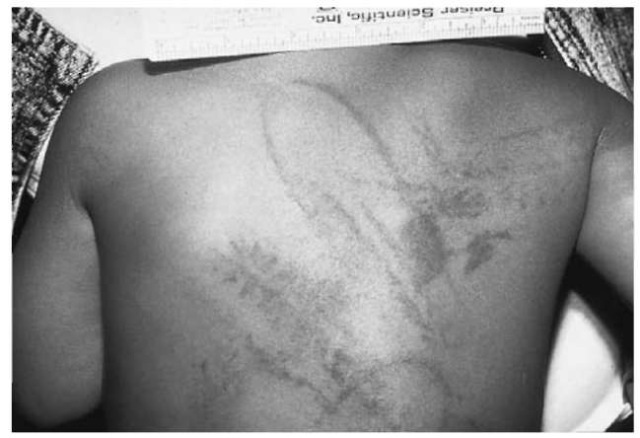
Figure 2 Blows from a belt can exhibit several different patterns. If the belt impacts on edge, a linear contusion will be produced. If the belt impacts more on its side, a wider contusion may be imprinted. Woven belts will leave a mirror image of the weave imprinted on the skin.
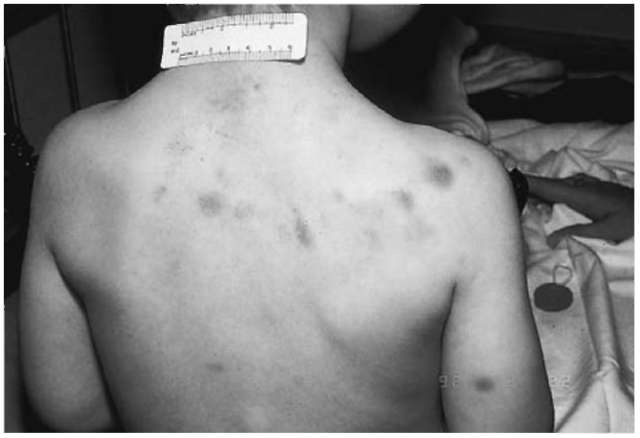
Figure 3 Pressure from fingertips will leave small semicircular contusions, measuring 1.0-1.5 cm in diameter.
The most common history given by a victim of domestic violence is: ‘I fell’. When attempting to determine if the history is consistent with the physical findings, one must evaluate where the injuries are located, and where they are absent. When an individual falls, one expects to find blunt force trauma present at bony prominence, including: the zygomatic arch, elbows, extensor services or the forearm and knees (Fig. 10). When soft tissue trauma is seen in other anatomical locations, particularly breasts (Fig. 11), chest, back, abdomen and neck, one must have a high index of suspicion for inflicted injury.
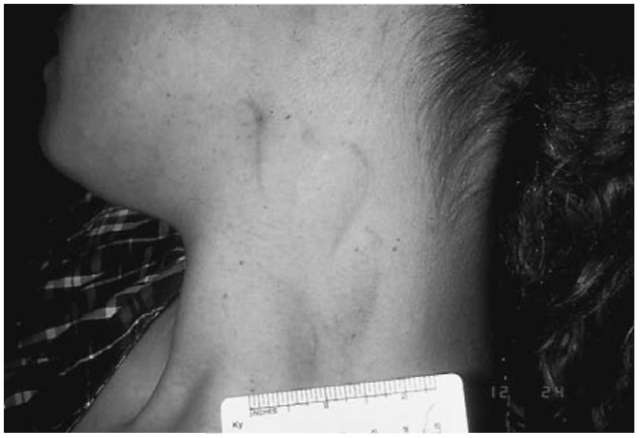
Figure 4 Contact from fingernails will result in a pattern abrasion which may be associated with up to four parallel linear abrasions.

Figure 5 Impact with a baseball bat will result in an area of central clearing surrounded by two parallel lines. The blood directly beneath the area of impact is forced upward and outward around a linear object, resulting in rupture ofthe vessel outside the area of impact.
The pattern contusion which may be the most specific to and sensitive for the identification of the individual who inflicted it, is the bite mark. The bite mark may present as a pattern contusion, a pattern abrasion or a combination of the two (Fig. 7). Bite marks vary greatly in the quality of their identifiable features, dictated by the anatomical location of the bite and the motion of the teeth relative to the skin. Some bite marks may not be identified as a bite, and present as a nonspecific abrasion or contusion (Fig. 12). When a bite is identified in an acute setting and the perpetrator is ‘unknown’, care must be taken not to destroy potential evidence. Evidence, including buccal cells with their inherent DNA and saliva cells with their inherent ABO blood group protein antigens could be easily washed away if a bite were cleaned prior to the forensic evaluation. The first step in ‘suspicious wound’ management should be to swab the skin’s surface with a sterile cotton swab, moistened with sterile saline or distilled water. This swabbing may succeed in collecting traces of the assailant’s saliva and epithelial cells. Blood group antigens degrade rapidly. This evidence is short-lived and should, therefore, be managed with this fact in mind. About 80% of the population will secrete their ABO blood group protein antigens in their saliva. This, plus the collection of epithelial cells, with DNA, will assist law enforcement agencies in the identification of or exclusion of certain suspects. Ideally, a forensic odontologist should be consulted in an effort to document the wound in a manner which permits the comparison of the teeth marks with the teeth of the suspect at a later date.
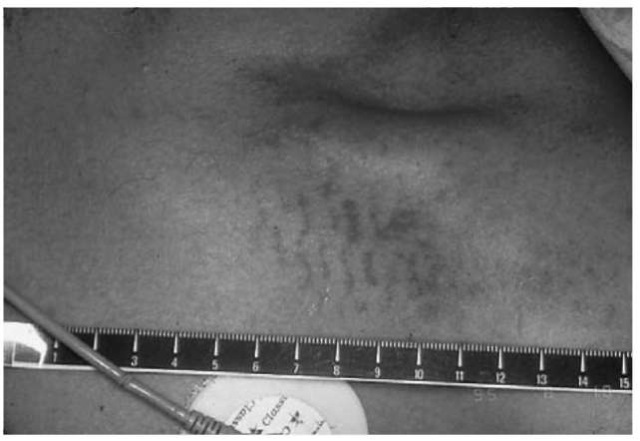
Figure 6 A kick or stomp from the sole of a shoe may give rise to a pattern contusion, which mirrors the pattern of the sole. Such contusions must be documented early in the course of patient care, prior to the fading or resolution of the pattern.

Figure 7 Bite marks may have an array of appearances including: semicircular, arched contusions, abrasions, and imprints of individual teeth characteristics.
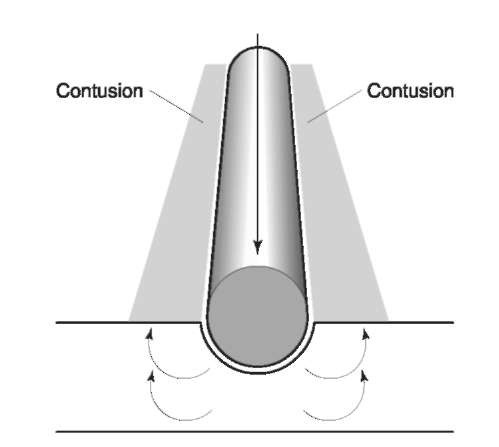
Figure 8 A diagrammatic representation of the pathophysiology associated with blunt force impact on a rounded linear object. The blood directly beneath the rounded linear object is forced up to the side and the increased pressure under vessels causes the vessels to rupture. The area of central clearing surrounded by two parallel lines is pathognomonic for impact with a rounded linear object.
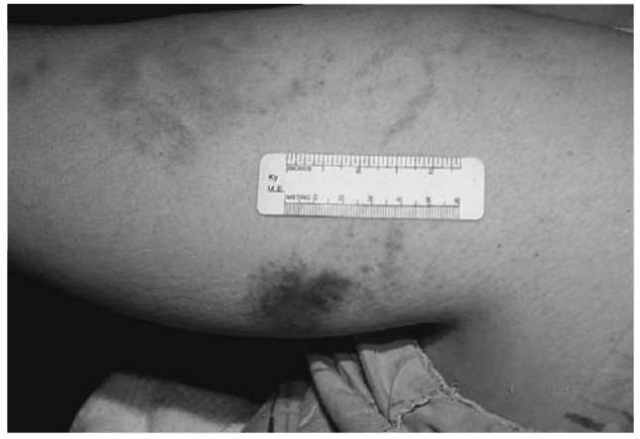
Figure 9 The medial aspect of the upper arm demonstrates a ‘grab mark’. Pressure from fingers and fingertips will give rise to fingertip contusions as well as pattern contusions, which outline the perpetrator’s fingers.
Utilization of alternative light sources such as ultraviolet or infrared may reveal a pattern contusion within or deep under the epithelium, which is not visible to the naked eye. This is most helpful in patients who are darkly pigmented (Fig. 13). Such sources are routinely used by forensic odontologists on faint, old or difficult bite marks. Successful identifications have been made on bite marks at six months postinjury.
The dating or aging of a contusion or bruise has been the focus of much debate within the forensic community. The development of a contusion is based on a number of variables: amount of force applied to the skin, the vascularity of the tissue, the fragility of blood vessels, the tissue density and the amount of blood that escapes into the surrounding tissue. As a result, there is no reproducible standard for the dating of a contusion based on its color. This author does not recommend the dating of a contusion based on the color to the naked eye. At present there are projects ongoing to evaluate the dating of contusions, based on degradation of the heme molecule. Currently these studies are experimental but are showing promise.
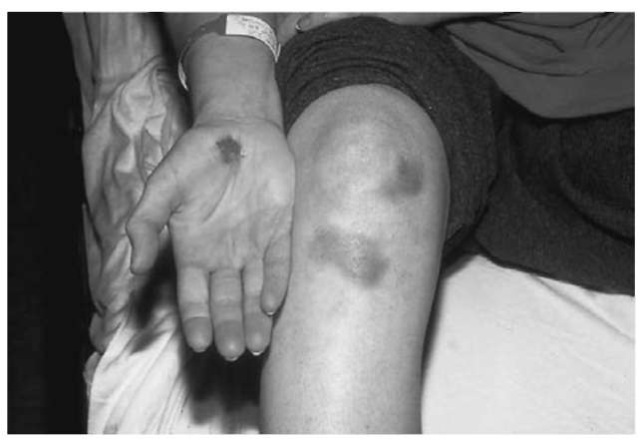
Figure 10 Injuries that are associated with falls would include contusions and abrasions to the bony surfaces of the body, including: the zygomatic arch, extensor surfaces of the arms, elbows, knees and shins.

Figure 11 The presence of unexplained contusions to the breast is strongly correlated with domestic or partner violence. This breast displays a several-day-old contusion from the tissue being squeezed during an assault.
Pattern abrasions
An abrasion is a rubbing or scraping away of the superficial layers of the epidermis. Examples of pattern abrasions include fingernail scratches (Fig. 4), bite marks, imprints of carpet fabric (Fig. 14), and ligature marks around the wrist or neck. The presence of such pattern injuries, unremarkable from the standpoint of treatment, may provide invaluable information from a forensic and injury reconstruction perspective.
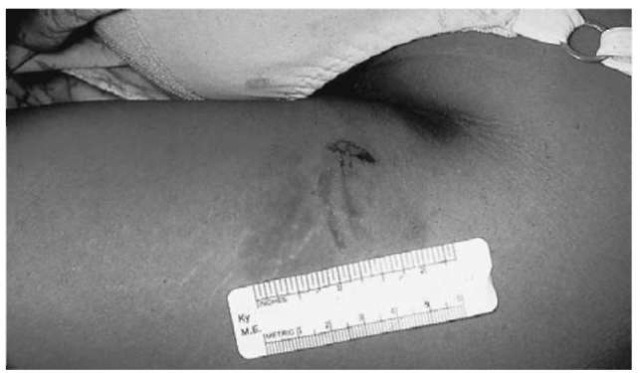
Figure 12 This is an ‘atypical’ bite mark from the victim pulling away from the teeth of the perpetrator. This resulted in linear or curvilinear abrasions.
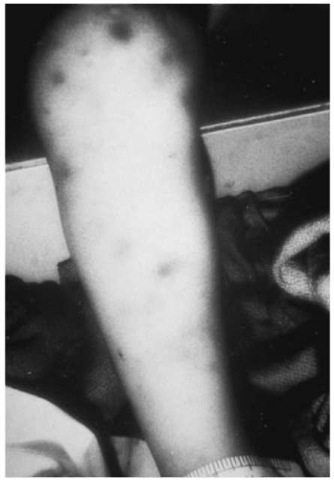
Figure 13 The use of infrared light sources can assist law enforcement in determining the presence of blood beneath the skin in darkly pigmented patients. This patient exhibits contusions which were invisible to the naked eye.
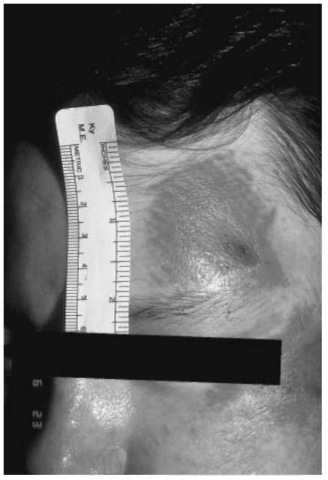
Figure 14 The pattern abrasion present on the patient’s left forehead was the result of impact with a carpeted floor. The linear characteristics of the carpet’s weave are imprinted on the patient’s skin.
Pattern lacerations
A laceration is defined as a ‘tear produced by blunt force trauma’. The term laceration is often misused by medical professionals to describe an incised wound. An incised wound results from a sharp-edged implement, i.e. scalpel, knife or glass shard being drawn across the skin. To distinguish a laceration from an incised wound, one needs simply to look for the laceration’s characteristic abraded or crushed skin edges, and unique tissue-bridging. In contrast, the edges of an incised wound will be sharply demarcated. Pattern lacerations are the least common type of pattern injury. An example of a pattern laceration is shown in Fig. 15; the wave-like wound imprint was produced by the head of a pipe wrench.
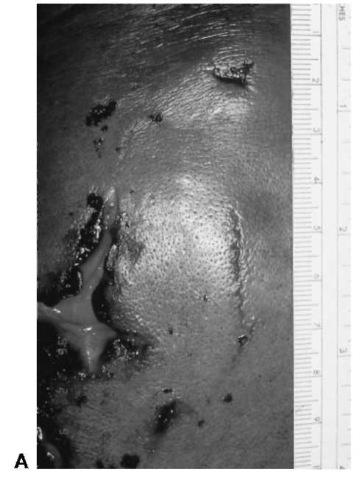

Figure 15 A,B This pattern laceration on the patient’s scalp has wavelike characteristics which were imprinted from the teeth of a pipe wrench.
Sharp Force Pattern Injuries
Sharp force injuries are of two types: either incised or stabbed. The incised wound is longer than it is deep. The stab wound is a puncture wound that is deeper than it is wide. The wound margins of sharp force injuries are clean and lack the abraded edges of injuries from blunt force trauma.
A certain amount of forensic information can be gathered from the examination of a stab wound. Characteristics of a knife blade, single or double edged, can be determined from visual inspection (Fig. 16). Additional characteristics such as serrated versus sharp, can be detected if the blade was drawn across the skin during its insertion or withdrawal (Fig. 17). It is important to note, however, that serrated blades do not always leave characteristic marks.
Thermal Pattern Injuries
A thermal pattern injury is an injury whose offending force is heated and whose physical appearance belies the heat source. Thermal injuries of an inflicted nature are commonly seen in the elderly and in children. The detailed history of a thermal incident should include how the burn occurred and should also elicit information about the position of the patient relative to the thermal source. This information is critical in order to render an opinion as to whether the injury was of an inflicted or accidental nature. Common inflicted thermal pattern injuries include: flat iron burns (Fig. 18), curling iron burns (Fig. 19), splash burns (Fig. 20) and immersion burns
(Fig. 21).
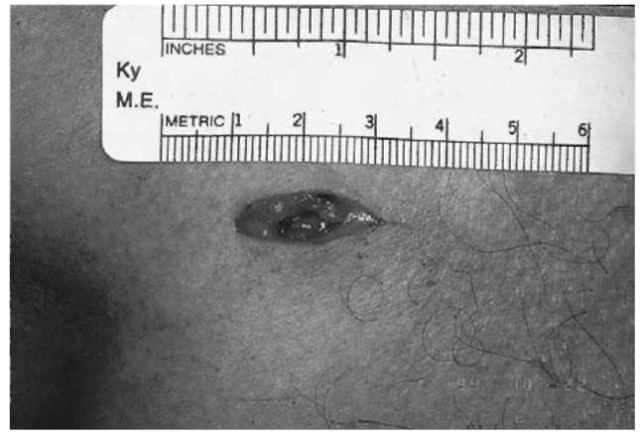
Figure 16 Examination of a stab wound will reveal the characteristics of the inflicting knife. This wound demonstrates a sharp and a dull edge. The sharp edge is associated with the sharp edge of the knife blade.
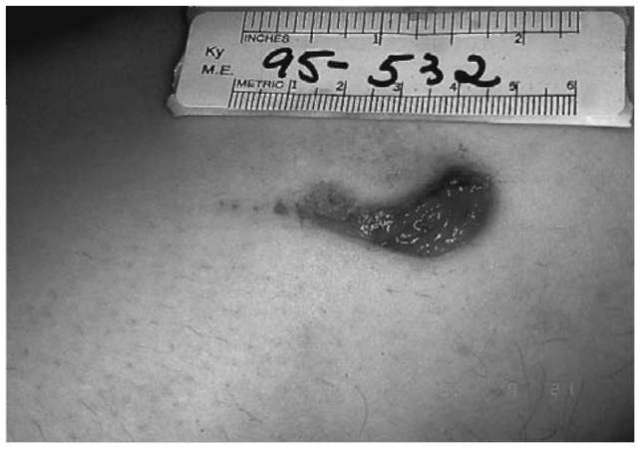
Figure 17 Examination of this wound reveals small punctate abrasions near the sharp edge. These abrasions are the result of contact with the serrated portions of the blade. A serrated blade may however inflict no abrasions if the blade is inserted and withdrawn in a vertical fashion.
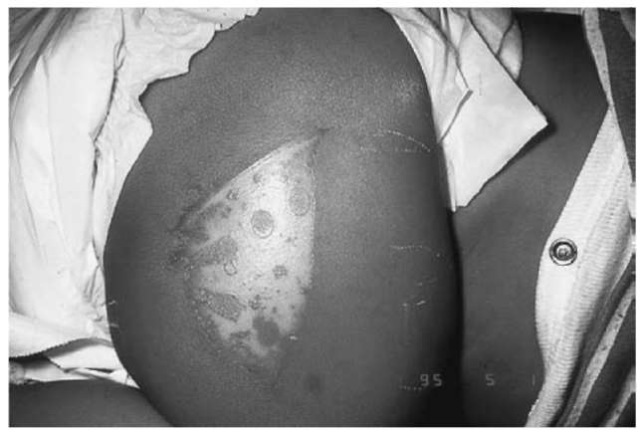
Figure 18 Contact with the flat portion of a hot iron results in a unique thermal injury. The areas of sparing are from the steam holes.
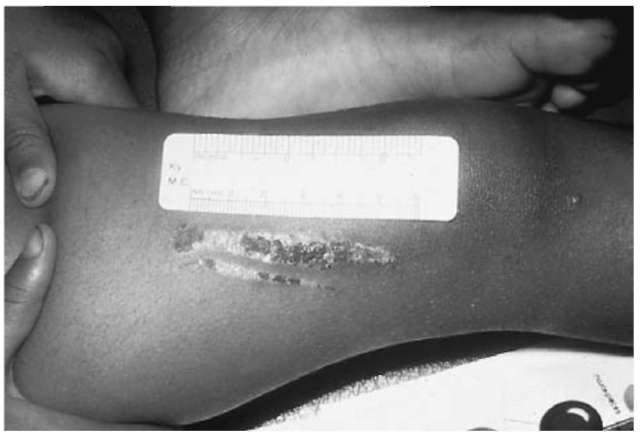
Figure 19 Contact with a linear curling iron will result in a mirrored linear thermal injury.
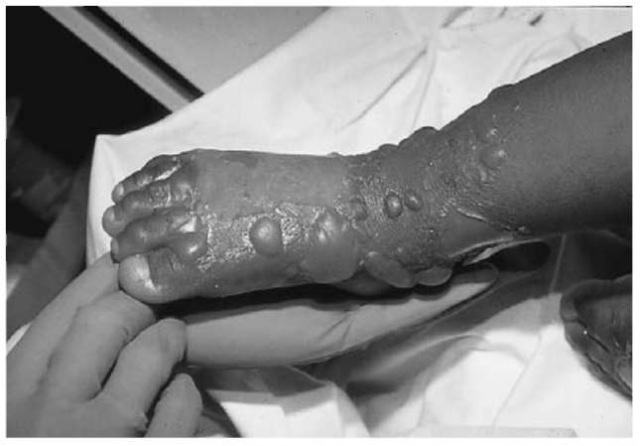
Figure 20 ‘Splash burns’ are the result of splashed water droplets. Areas of satellite lesions are expected from splash burns.
Immersion or dipping burns are ones characterized by a sharp or clear line of demarcation between burned and unburned tissue. Splash burns, in contrast, are characterized by an irregular or undulating line over isolated areas of thermal injury, usually round or oval in shape, caused by droplets of hot liquid. The severity of the thermal or scald injury is dependent on the length of time that the skin is in contact with the offending source and the temperature of the source itself. In the case of water, from the tap or faucet, it would take 1 s to cause a full thickness burn at 150° (65.5°C), and 180 s to elicit an injury of comparable severity at 120° (49°C) (Fig. 22). The measurement by law enforcement of the water temperature of a households or institutions should be a standard component of any investigation involving in a scald injury of a child, a developmentally delayed patient or an elderly individual.
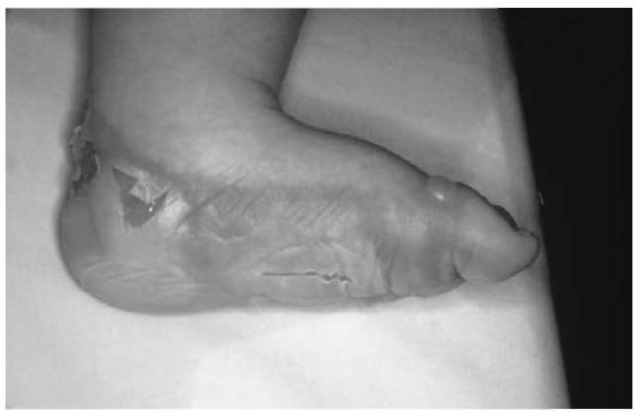
Figure 21 When a child’s foot is immersed in a hot liquid, a line of demarcation results. This patient had symmetrical burns on her right and left feet.
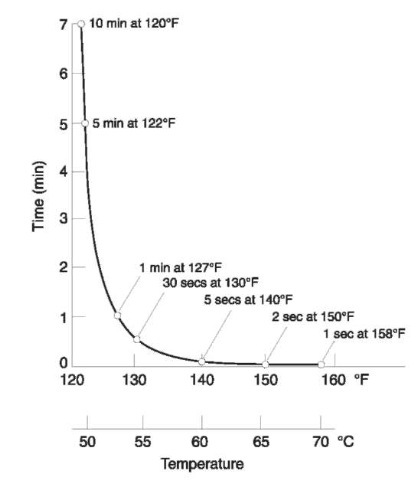
Figure 22 The factors associated with thermal injury are the temperature of the offending medium and the duration of contact.
Conclusion
Familiarity with pattern injuries will assist physicians, nurses and law enforcement investigators with the recognition of inflicted injuries in victims of child abuse and domestic violence. The ability to differentiate between fact and fiction will benefit the criminal justice system in its effort to protect the innocent and prosecute the guilty.
